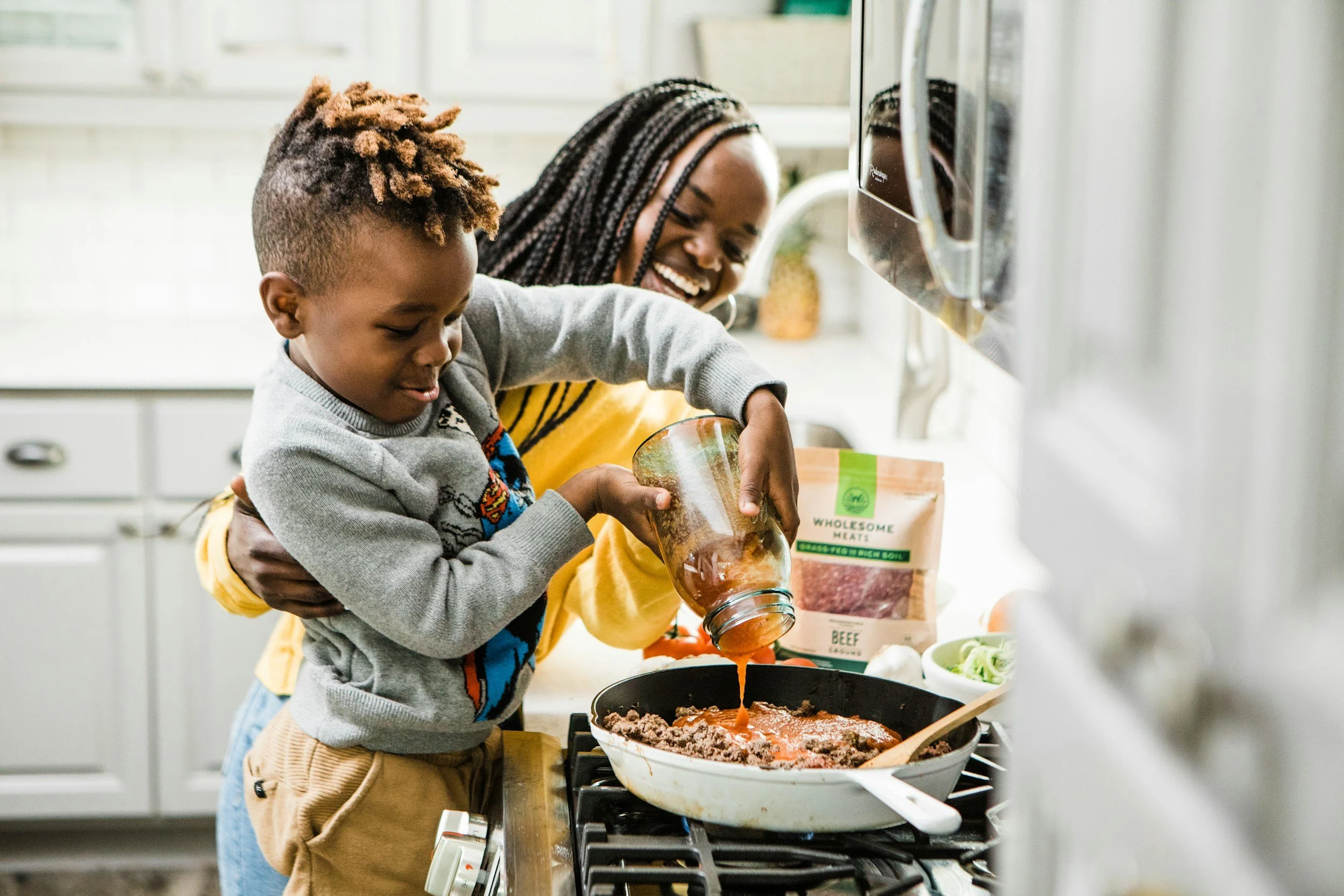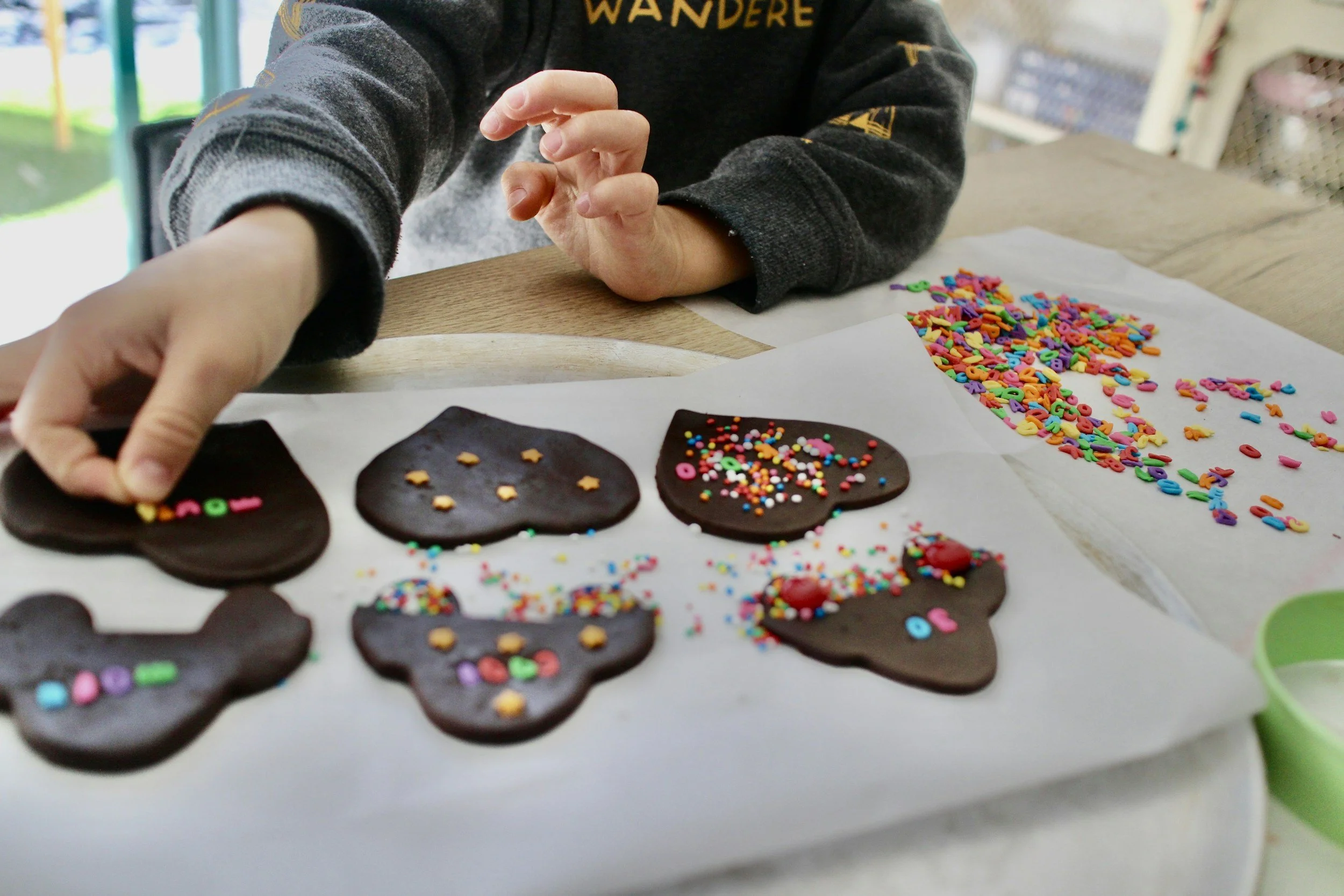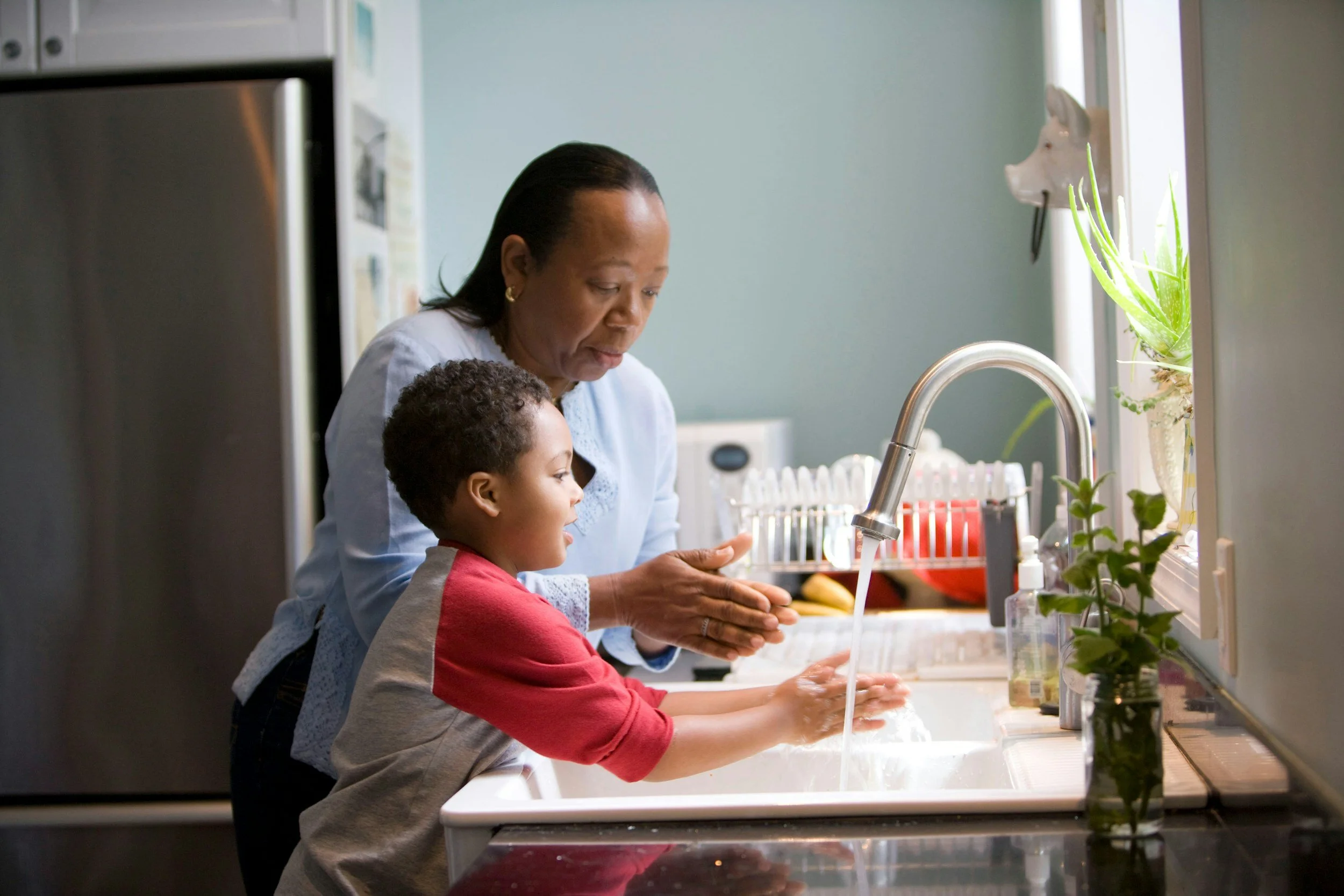Cooking with a Purpose: How to Include Kids in Meal Prep to Support Feeding Therapy
Feeding therapy isn’t just something that happens in a clinic or during designated therapy time—it can be a natural, engaging part of daily life. One of the most effective and fun ways to reinforce progress in feeding therapy is to involve children in the kitchen. Whether your child is a picky eater, has sensory sensitivities, or is working through oral motor delays, preparing meals together can provide a rich opportunity to build skills and confidence around food.
Here are practical and creative ways to include kids in meal preparation to support feeding therapy goals:
1. Create a “Food Exploration” Station
The kitchen can be an exciting place for sensory exploration. Before asking your child to eat or even taste a food, let them explore it. Set up a “food discovery zone” on the counter or a child- sized table with a variety of colorful, textured, and aromatic ingredients.
What to do:
● Offer a range of ingredients: chopped fruits, uncooked pasta, herbs, yogurt, seeds, etc.
● Encourage touching, smelling, squeezing, stirring, and sorting.
● Name each item together and describe it (“slippery banana,” “crunchy carrot,” “smelly cheese”).
Relate it to therapy: Sensory play with food can desensitize aversions and promote comfort with a wider variety of textures. Allowing non-eating interaction helps reduce fear and builds familiarity.
2. Offer Age-Appropriate Tasks
Children thrive when they’re given responsibilities that match their abilities. Simple kitchen tasks can help build confidence, motor skills, and interest in food.
Examples of age-appropriate tasks:
● Toddlers (2–3 years):
○ Rinsing fruits and vegetables in a colander
○ Dumping pre-measured ingredients into bowls
○ Stirring batter with a spoon
○ Using cookie cutters
● Preschoolers (4–5 years):
○ Tearing lettuce or spinach
○ Mixing with a whisk
○ Spreading with a child-safe knife
○ Sorting foods by color or texture
● Early Elementary (6–8 years):
○ Cracking eggs (with supervision)
○ Measuring dry and wet ingredients
○ Using peelers, mashers, and scissors
○ Making sandwiches or simple snack plates
● Older Children (9+ years):
○ Reading recipe steps aloud
○ Chopping with a small knife (with supervision)
○ Using the microwave or toaster oven
○ Planning a simple meal or snack
Relate it to therapy: These tasks build fine motor coordination and give children a sense of control, which is key for reducing mealtime anxiety. It also builds a sense of ownership that can increase a child’s willingness to try what they helped make.
3. Use Visual Schedules and Recipe Cards
For children who benefit from structure and predictability, visual recipe steps or picture-based schedules can help reduce overwhelm. You can even laminate cards or use magnets to “check off” each task.
Ideas for visual supports:
● Step-by-step photo recipes (e.g., “First: wash strawberries,” “Next: put in a bowl”)
● Visual timers to show how long an activity will take
● Ingredient cards that show what’s being used in the recipe
Relate it to therapy: Visuals provide predictability, reduce cognitive overload, and support sequencing—a key executive function skill. They also reduce verbal demands for children who may struggle with auditory processing or language delays.
4. Let Them Be the Taste Tester (No Pressure!)
One of the most powerful feeding therapy strategies is offering repeated exposure to new or challenging foods in a no- or low-pressure environment. Cooking provides such an environment!
Ways to introduce foods:
● Offer a “chef’s sample” before serving the dish.
● Let your child choose whether to smell, lick, touch, or bite what they have participated in making.
● Praise curiosity: “Wow, you smelled that lemon even though it was really strong!”
Relate it to therapy: Children are more likely to try new foods when they feel in control and not forced. Exposure during cooking makes food more familiar, which often leads to eventual tasting.
5. Make It a Sensory-Rich Experience
Cooking involves all five senses. Invite your child to:
● Smell fresh herbs or spices
● Listen to sizzling sounds or timers
● Feel different textures
● Watch food change as it cooks
● Taste (when ready)
Relate it to therapy: Multi-sensory engagement helps children interpret and integrate sensory input and feel more comfortable trying new things.
6. Let Kids Make Choices
Allowing a child to have a say in what’s being prepared—even in small ways—can be empowering. Offer choices within boundaries to avoid overwhelming them.
Examples:
● “Would you like apples or bananas in your oatmeal?”
● “Should we use triangle or star cookie cutters?”
● “Do you want to stir or pour today?”
Relate it to therapy: Offering choices supports a child’s autonomy and helps reduce resistance. It also helps them develop problem-solving skills and feel invested in the process.
7. Celebrate the Process, Not Just the Meal
Not every cooking session will end in a perfect dish or a clean kitchen—and that’s okay. Your goal is not just nutrition but progress, confidence, and connection.
Tips for success:
● Celebrate engagement, not just eating.
● Offer positive reinforcement: “I love how you helped mix that!”
● Avoid pressure: If they don’t eat the food, that’s still progress.
Relate it to therapy: Children learn best when they feel safe, supported, and successful. By making cooking fun and pressure-free, you create an environment that mirrors best practices in feeding therapy.
Final Thoughts:
Including kids in meal prep isn’t just about teaching life skills—it’s a powerful, therapeutic opportunity to support their sensory development, reduce mealtime stress, and build a healthier relationship with food. Whether your child is in formal feeding therapy or just working through some picky habits, inviting them into the kitchen gives them a place to grow, explore, and thrive.








